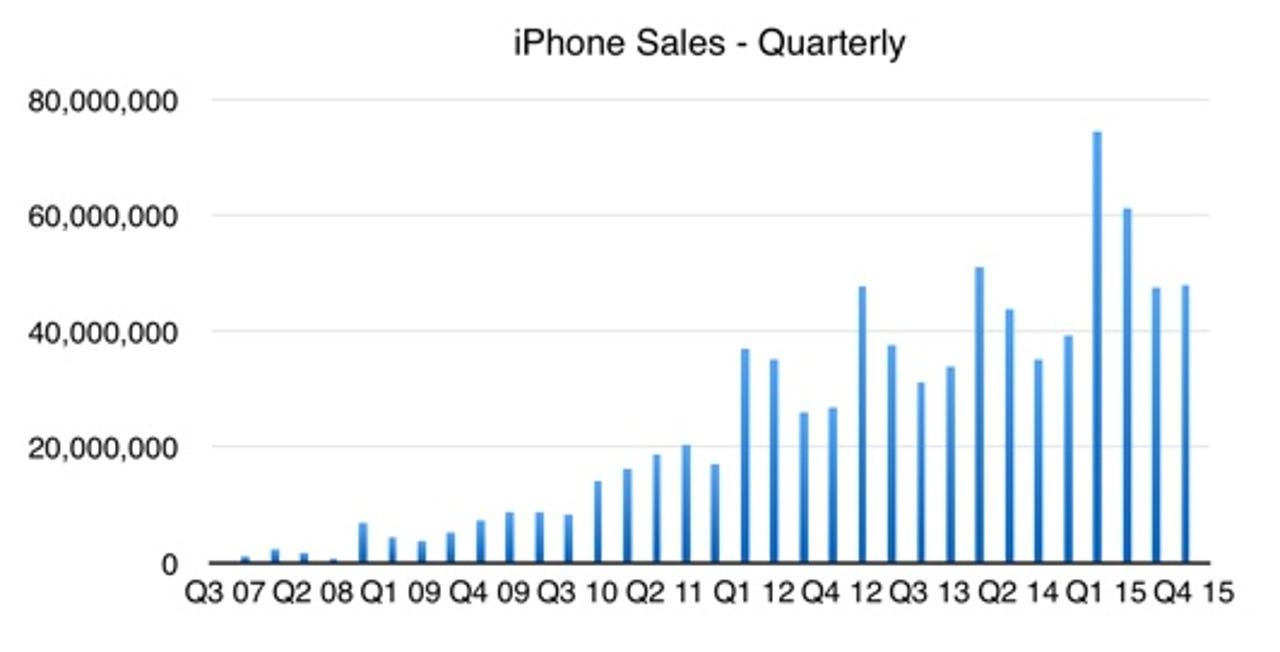Don't panic about iPhone sales - yet

Reports claim that Apple is making significant cuts to iPhone 6s and iPhone 6s Plus production, equivalent to around 30 percent. But what does this mean in real terms?
The best way to try to see what the future has to offer is to look to the past for clues.
Here is a chart of iPhone sales going back to the beginning in Q3 07.

Let's now focus on the last 12 quarters - four years - and look for patterns.
I can see several patterns:
- The first quarter of the financial year is when iPhone sales records are made. This is because the quarter is buoyed not only by the holiday season but also the release of a new iPhone. Each has always been better than the last.
- The drop in sales between Q1 and Q2 is usually around 15 to 20 percent.
- Q3 is the worst quarter for new iPhones.
- The difference between Q1 sales and Q3 sales are in the region of 20 to 30 percent.
Now, we don't as yet know what Q1 sales will be - we have to wait until the end of the month to find out - but the main test will be if Apple can beat Q1 15 sales of 74.5 million units. If sales top this then the cut may just be because Apple overestimated how strong sales would be.
But if sales have taken a tumble, then it's likely that Apple has a lot of iPhones laying about around the world, and the cut is a more drastic response to this, because Apple knows from past data that Q2 sales will be at least 15 percent down, with Q3 being about 30 percent weaker.
But we know that Q1 has been pretty reliable at setting the trend for the future quarters.
Morgan Stanley's chief financial analyst Katy Huberty has predicted that iPhone sales will fall in 2016 by 5.7 percent. In real terms that means that sales will fall from 231 million units to 218 million units. A drop of 5.7 percent would surely make Apple - and investors - squirm, but it's a far try from a 30 percent drop.
Another factor to bear in mind is that last year it was reported that Apple had ramped up production of the iPhone 6s and iPhone 6s Plus in order to minimize delays and cater for China being part of the day 1 launch. We don't know by how much production was increased by at the time, and the 30 percent cut could be nothing more than an adjustment to cater for that.
For all we know Apple had a booming Q1 - what data we have sure does suggest that - and is simply tailing off production to meet projected demand over the next three quarters.
Bottom line is that we'll know more once we get the Q1 figures in. If they're good, then this cut in production is likely nothing more than a planned adjustment, but if they're not so good then it could be an interesting year for Apple.
See also: